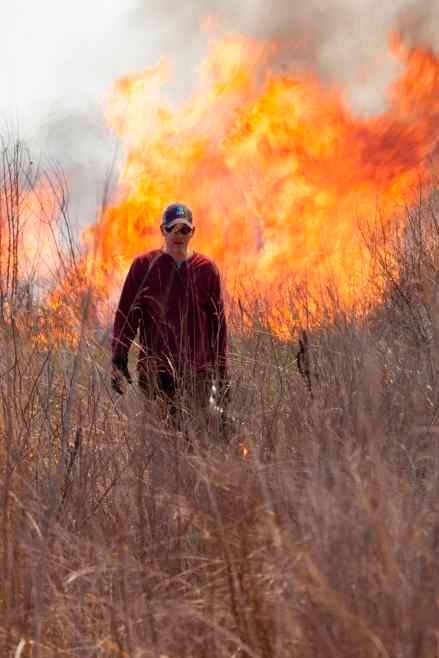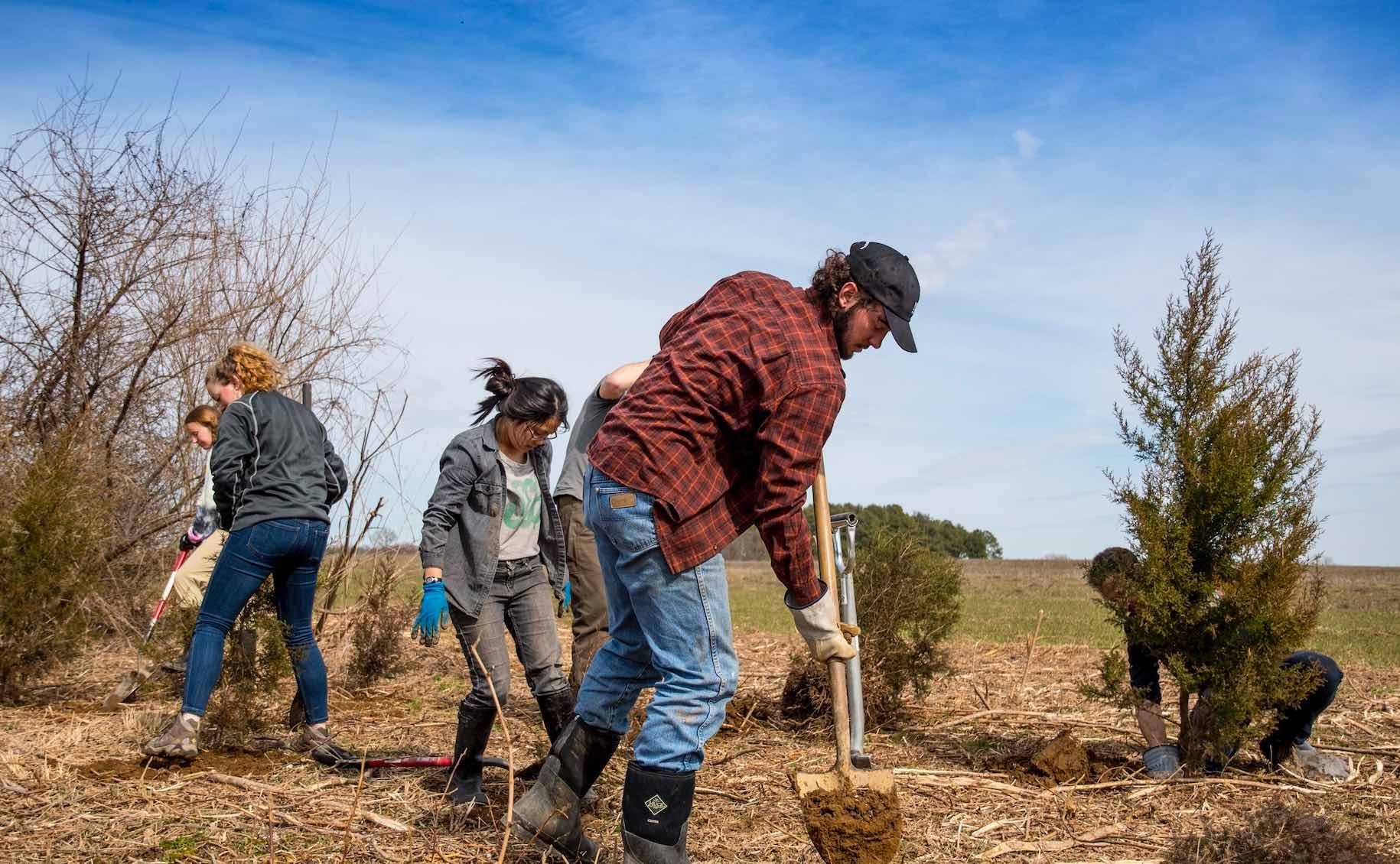

Natural Lands Project
Balancing natural lands on working farms for wildlife and clean water.
Habitat loss and fragmentation are the leading causes of population declines for wildlife across the rural landscape. The Natural Lands Project works with private and public landowners across Maryland’s Eastern Shore to convert marginal cropland into diverse native meadows, wetlands, and forests. These restored areas support diverse wildlife populations while also reducing excessive nutrients and sediment entering our local waterways.
- 410-708-4479
- dsmall2@washcoll.edu
- 485 S. Cross St., Chestertown, MD 21620
Our Work
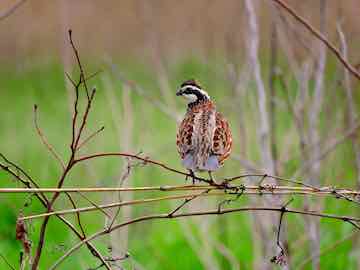
Northern Bobwhite Quail
An iconic, charismatic gamebird with a deep connection to outdoor enthusiasts across the rural landscape. Here, on Maryland’s Eastern Shore, quail once thrived throughout the varied farm landscape, but with increased development, maturation of wooded areas, and modern efficient farming techniques there is little habitat left. Decades of habitat implementation and management the college’s River and Field Campus (RAFC) has demonstrated that when areas of marginal cropland are converted to early successional habitat quail can thrive. The farm serves as a model for which other landowners, both state and federal, can use a blueprint to affect similar change.
Habitat loss and change continues to be a major factor in quail declines throughout their range, and this is true for Maryland as well. Successes on RAFC highlight the need for more large-scale habitat restoration projects geared towards grassland birds. We strive to create the same balance we see at RAFC on other farm lands throughout Maryland’s Eastern Shore.

Grassland Birds
Grassland bird populations are declining throughout their range and this is particularly true for the east coast populations. Grassland and early successional habitat continues to decline at alarming rates due to intensified agriculture, human population growth resulting in increased urbanization, and continued maturation of eastern deciduous woodlands. Grasslands throughout the world are by far the rarest ecosystem with less than one percent remaining. As part of the NLP protocol, we conduct bird surveys pre- and post-habitat installation to document occupancy during the breeding season.
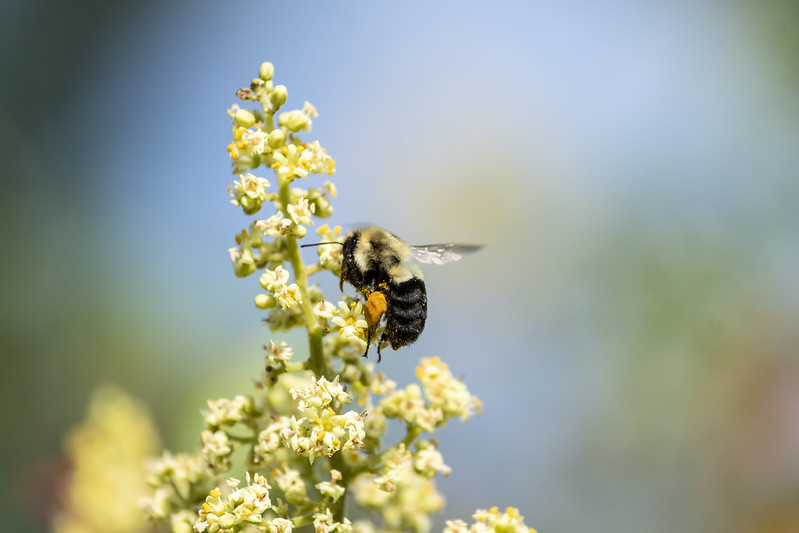
Pollinators
Many other species of wildlife benefit from increased grassland habitat created by NLP projects. Hundreds of species of native bees and butterflies (including Monarch Butterflies) and other insects will find food and shelter in these new habitats. Insect population declines can be attributed to many of the same reasons as grassland bird declines including: habitat loss and fragmentation, competitive non-native species, increased use of herbicides and pesticides, and climate change.
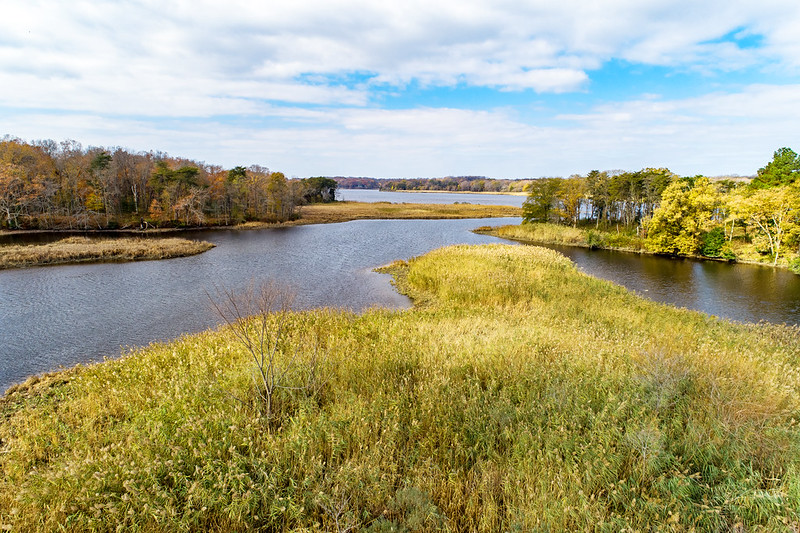
Wetlands
Wetlands are the earth's natural sponges. They absorb, store and prevent sediment and excess nutrients from entering local waterways. They also promote flood control, shoreline stabilization, groundwater replenishment and providing wildlife habitat.
The Natural Lands Project promotes the restoration and creation of wetlands throughout the agricultural landscape to help improve water quality. We specifically target marginal cropland that does not produce a crop every year due to flooding. These areas on farm fields are characterized by low lying depressions with specific hydric soil types that hold water or areas where the topography creates channels allowing runoff to flow unimpeded to our waterways. Waterfowl will fill the wetlands throughout the winter months and Wood Ducks will find nesting habitat during the summer months.
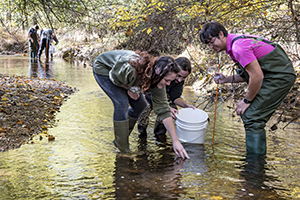
Clean Water
We focus on improving water quality by strategically adding native warm season grasses between agricultural land and creeks, rivers, wetlands, or wet woods, and by restoring wetlands to replace areas of marginal agricultural land. The benefits of these conservation practices include slowing water runoff, removing up to 85% or more of nutrients and pesticides, removing up to 75% or more of sediments, servings as a source of food, nesting cover and shelter for wildlife, stabilizing stream banks, providing setbacks from agriculture fields, and reducing downstream flooding.
- National Fish & Wildlife Foundation
- Unites States Environmental Protection Agency
- Eastern Shore Land Conservancy
- Cabela's
- Quail Forever
- Natural Resources Conservation Service
- ShoreRivers
- Ducks Unlimited
- Maryland Department of Natural Resources
- Maryland Parks Service
- Partners for Fish and Wildlife
- Lower Shore Land Trust
- Queen Anne's County Parks and Recreation
- Caroline County Recreation and Parks
- ShoreRivers our project partner, working with area landowners to promote habitat restoration projects to improve water quality.
- Ducks Unlimited our project partner, working with landowners to create wetlands.
- Tall Timbers Research Station & Land Conservancy is the pre-eminent Northern Bobwhite resource in the Eastern United States.
- Maryland’s Department of Natural Resources provided funds to kick start NLP and also is a partner in our quail research program.
- National Fish and Wildlife Foundation a funding agency of NLP and a national leader in habitat restoration projects supporting wildlife.
- The U.S.D.A.’s Farm Service Agency has grants and resources for landowners.
- The U.S.D.A.’s Natural Resources Conservation Agency also provides cost sharing and advice for landowners.
- The Northern Bobwhite Conservation Initiative is comprised of 25 state fish and wildlife agencies and conservation organizations and is working toward a unified strategy for Northern Bobwhite restoration and management.
